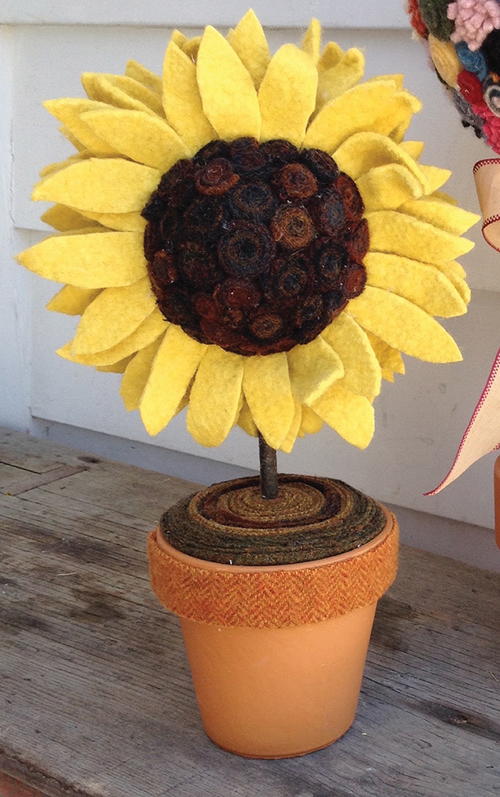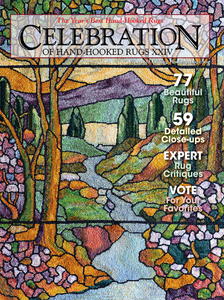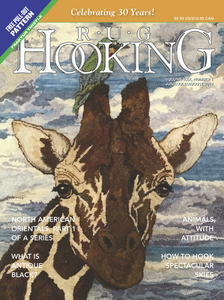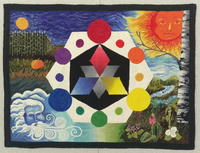A Twist on Topiaries
A tree-mendously fun way to use your wool strips

Even the tiniest bits of wool can be used to create coiled wool covers for the base of your topiary. Don’t be afraid to mix colors and textures to add even more eye-catching interest.
While attending a local county fair several years ago, I was struck by the fresh displays of flowers, fruits, and vegetables. Among these displays was a vibrant topiary of sunflowers. The rich tones of yellow, burgundy, orange, brown, and gold were nestled in a background of green leaves. I know that I stared, my mouth gaping wide, as I pondered the possibilities of replicating that scene in wool. After a bit of dreaming, I moved to the needlework department to admire the quilting, sewing, and, of course, the wool work. It was then that the light bulb came on, and my head began to spin with visions of flowers, wool, felt, sunflowers, more wool, pumpkins, calendula, and...well, the rest is history.
I had just learned about standing wool and quillies, and this project provided a perfect opportunity to experiment. That evening, I went home, pulled out my ever-growing and overflowing stash of wool remnants, and got to work. After one late night and extremely early morning, I had created my first standing wool topiary and nearly exhausted my stash of wool scraps.
That’s all it took. I was addicted, and I’ve been creating wool topiaries of every kind ever since.
Topiary Tips
Wool for Coiling
If it’s useable, I save it! Only the tiniest of wool scraps are ever thrown away. I seldom use anything but my scraps unless I need a large quantity of a specific color. Using wool scraps means less time washing and cutting other wools, greatly reducing construction time. Vary width and length of wool strips for variations in coil width and depth, creating textures similar to a fresh flower topiary. Don’t be afraid to blend wools (both old and new) to create character. Strips of one inch or more are best if you use repurposed sweaters or thicker wools. I prefer 100% wool or wool blends with minimal synthetic fiber content. Pieces with higher wool content hold their standing shape and are extremely durable.
Staci Shuck is a retired home economics teacher and co-owner of Grove’s, offering wool goods, classes, and retreats related to wool folk arts and needle arts. Her original designs, kits, and hand-dyed wools and yarns are available exclusively at www.grovesoffice.com.
This article excerpt is from the September/October 2016 issue. For more information on our issues, check out our issues page.








